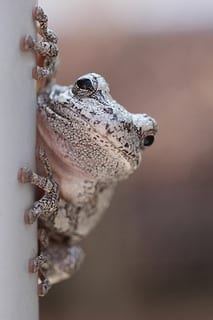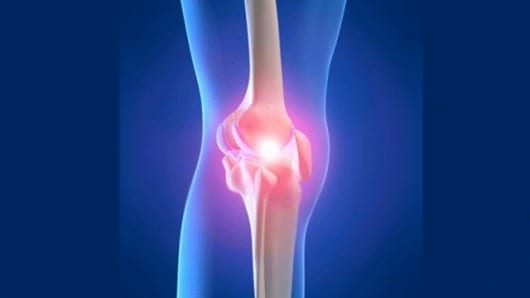
Microbes that thrive in lakes happily consume the pandemic fungus that has caused declines in more than half the planet’s amphibian species
In 2012 a team of temperamental donkeys picked their way down the French Pyrenees carrying a payload of voracious protists. Donkeys wouldn’t ordinarily be required to ferry single-celled microbes, but these tiny organisms happened to be inhabitants of the several hundred pounds of lake water that the donkeys were also carrying, whether they liked it or not. “It’s kind of funny,” says Dirk Schmeller, the scientist whose team hired the donkeys, “because it shows donkeys can help save amphibians.”
What makes that unlikely scenario possible is the microorganisms’ appetite for an equally minute chytrid fungus—a group of fungi with a swimming stage that resemble the ancestors of all fungi—called Batrachochytrium dendrobatidis, or Bd, which is wiping out amphibians worldwide. It turns out that a diverse collection of single-celled protists and tiny multicellular animals naturally hunt down and eat Bd in lakes, preventing the killer fungus from infecting frogs and other amphibians. Although Bd is an introduced fungus, similar fungi are abundant in lakes and a natural part of these micro predators’ diets, so their ability to prey on Bd is not unexpected. What was unexpected was the gusto with which they can eat the invasive fungus in the wild. Scientists had previously shown in experimental lab containers that a few micro predators would eat swimming Bd spores, but a new study indicates that the hunt happens in real-world mountain lakes, and seems to be taking place on a scale large enough to significantly reduce amphibian infections and deaths in those lakes. Schmeller, of the Helmholtz Center for Environmental Research in Germany, and colleagues published these conclusions in January in Current Biology.
The promising implication is that capitalizing on native microorganisms’ Bd-feasting ability could cut down the pandemic fungus enough to boost amphibian survival, without relying on the iffy introduction of foreign bacteria or deployment of ecosystem-disrupting antifungal chemicals—two methods that have been proposed. Rather, protecting amphibians may be as simple as promoting the health and survival of the microbes that already live in a lake or introducing them where they’ve been lost or suppressed.
The Latest on: Amphibian decline
[google_news title=”” keyword=”Amphibian decline” num_posts=”10″ blurb_length=”0″ show_thumb=”left”]
via Google News
The Latest on: Amphibian decline
- Hop into the world of frog conservation with Friends of Deckers Creekon April 26, 2024 at 8:59 pm
With over 6, 000 described frog species found on every continent except Antarctica, it's no surprise that these amphibians play a vital role in a variety of ecosystems. They vary greatly ; some ...
- Wood frogs achieved significant biological evolution in just 25 yearson April 26, 2024 at 11:34 am
Amphibians, like frogs, are particularly sensitive to changes ... ultimately leading to population decline or even extinction. This underscores the importance of recognizing the boundaries of ...
- Mini ponds are 'tiny universes' of biodiversity for gardens and windowsillson April 26, 2024 at 6:59 am
When the BBC's Katherine Latham made a pond with just a plant pot, some rocks and a few native pond plants, she was amazed at the speed wildlife moved in.
- Tennessee legislature adjourns. Here’s what lawmakers did and did not accomplish this yearon April 26, 2024 at 5:01 am
The 113th Tennessee General Assembly concluded on Thursday. Your guide to what lawmakers did and did not accomplish.
- The Waning Reign of the Wetland Architect We Barely Know (Hint: Not a Beaver)on April 23, 2024 at 12:08 am
They are prolific breeders, raising a dozen or more young per year in times of plenty, as happy and quick to set up house along a drainage ditch as in a wetland sanctuary. Even as other so-called ...
- ‘Dude, that’s 250’: Meet the 19-year-old Dallasite with big birding goalson April 22, 2024 at 6:31 am
Kalder Korte, 19, was the No. 1 birder in Dallas County last year, according to a globally used app called eBird which allows users to log bird ...
- Fungus Devastating Frogs on Nearly Every Continent May Have an Achilles Heel–and Scientists Think it Could Save the Amphibianson April 22, 2024 at 6:02 am
A pandemic among frogs has been going on worldwide for years—the culprit: a fungal infection that has affected amphibians on nearly every continent. But now, the discovery of a virus that has evolved ...
- Monday briefing: The sounds of birdsong and nature are disappearing – here’s what that meanson April 21, 2024 at 9:54 pm
The Guardian’s new Soundscape series reflects how the diversity of birdsong and animal noise is diminishing the world over thanks to agriculture and climate change ...
- Rewilding amphibians: Protecting endangered species to restore ecosystemson April 17, 2024 at 1:08 pm
The state of the world's amphibians Amphibian declines and extinctions are attributed to multiple, complex factors, including habitat degradation, climate change, and, most critically, infectious ...
- Reptiles in South Africa are under threat, but there's good news tooon April 15, 2024 at 10:40 am
Media reports about the biodiversity crisis and what researchers have argued qualifies as a mass extinction event tend to focus on the big ecological effects. Melting ice sheets, severe weather events ...
via Bing News










